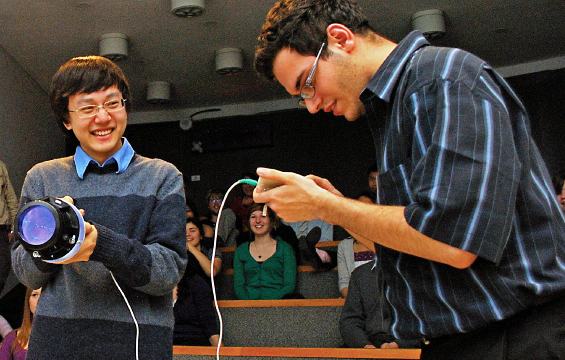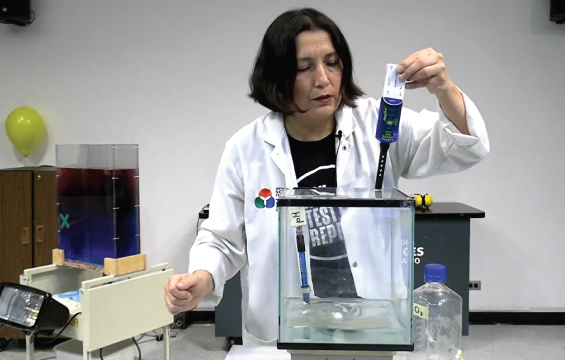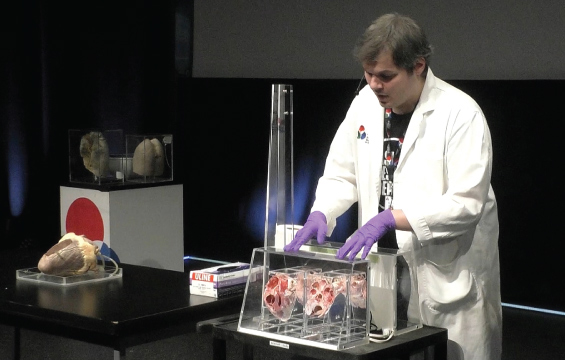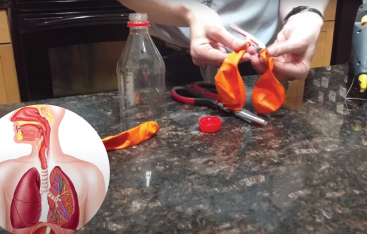Light and Optics
On-Site School Program

Curriculum Connections:
Strand D : Physics
| E1.2 | analyse a technological device that uses the properties of light, and explain how it has enhanced society |
|---|---|
| E2.1 | use appropriate terminology related to light and optics, including, but not limited to: angle of incidence, angle of reflection, angle of refraction, focal point, luminescence, magnification, mirage, and virtual image |
| E2.3 | predict the qualitative characteristics of images formed by plane and curved mirrors, test their predictions through inquiry, and summarize their findings |
| E3.1 | describe and explain various types of light emissions |
| E3.2 | identify and label the visible and invisible regions of the electromagnetic spectrum |
| E3.3 | describe, on the basis of observation, the characteristics and positions of images formed by plane and curved mirrors, with the aid of ray diagrams and algebraic equations, where appropriate |
| E3.5 | describe the characteristics and positions of images formed by converging lenses, with the aid of ray diagrams |
| E3.6 | identify ways in which the properties of mirrors and lenses (both converging and diverging) determine their use in optical instruments |
| E3.7 | identify the factors, in qualitative […] terms, that affect the refraction of light as it passes from one medium to another |
| E3.8 | describe properties of light, and use them to explain naturally occurring optical phenomena |
Strand D : Physics
| E1.1 | analyse how additive and/or subtractive colour theory are applied in technologies used in everyday life |
|---|---|
| E1.2 | describe the role of selected optical technologies in the transmission of information, and analyse their impact on society |
| E2.1 | use appropriate terminology related to light and optics, including, but not limited to: angle of incidence, angle of reflection, angle of refraction, centre of curvature, focal length, luminescence, magnification, principal axis, radius of curvature, and vertex |
| E2.4 | predict the qualitative characteristics of images formed by converging lenses, test their predictions through inquiry, and draw ray diagrams to record their observations |
| E2.5 | investigate how various objects or media reflect, transmit, or absorb light, and record their observations using ray diagrams |
| E2.6 | predict the effect of shining a coloured light on objects of different colours, and test their predictions through inquiry |
| E3.1 | describe various types of light emissions and how they produce light |
| E3.2 | identify and label the visible and invisible regions of the electromagnetic spectrum, and identify the colours that make up visible white light |
| E3.3 | explain the laws of reflection of light, and identify ways in which light reflects from various types of mirrors (e.g., plane, converging, diverging) |
| E3.4 | describe qualitatively how visible light is refracted at the interface between two different media |
| E3.5 | use additive colour theory to predict the results of combining primary and secondary light colours |
| E3.6 | use subtractive colour theory to describe the effect of colour filters on white light |
| E3.7 | explain how the colour of an object is determined by reflection, absorption, and transmission of colour |
| E3.8 | explain how the properties of light or colour are applied in the operation of an optical device (e.g., a reflecting telescope, stop lights, stage lights) |
Sensory Considerations
This program features low light conditions and, at times, complete darkness.


